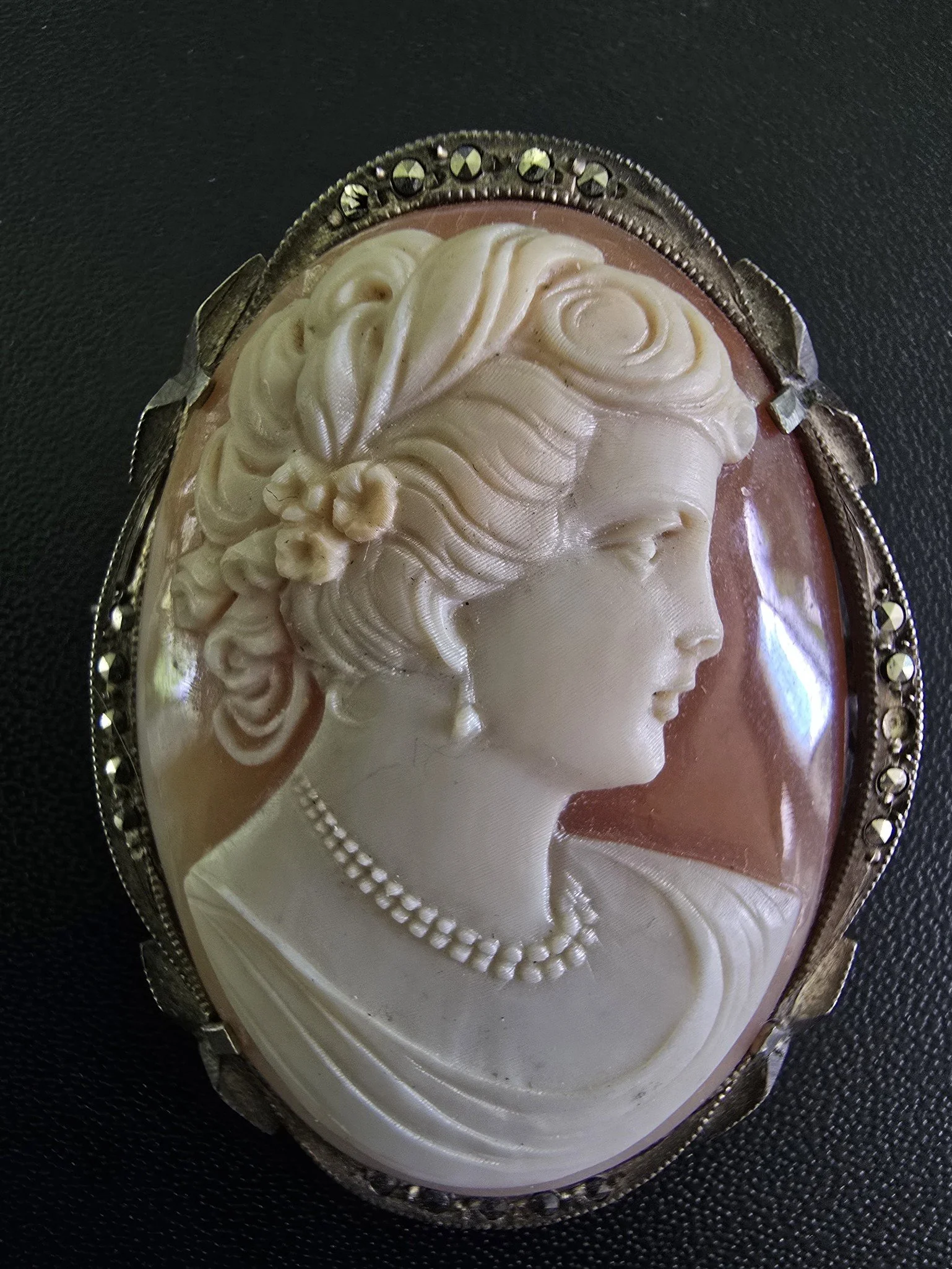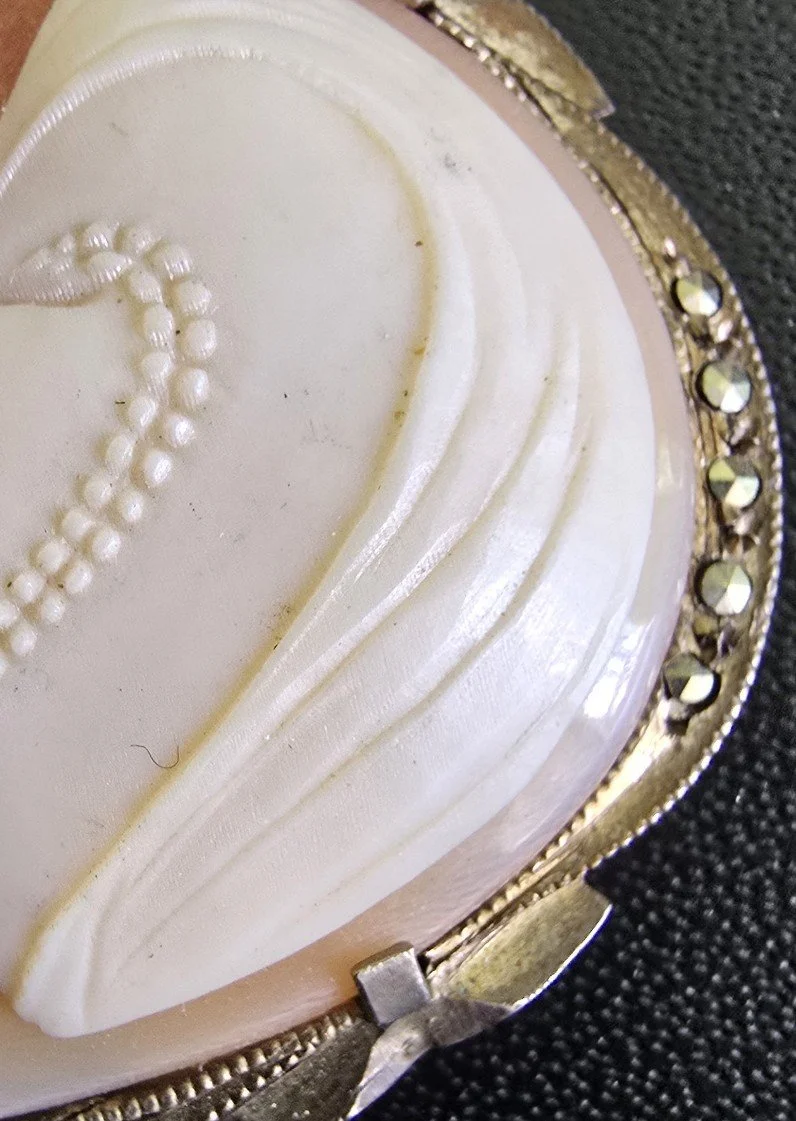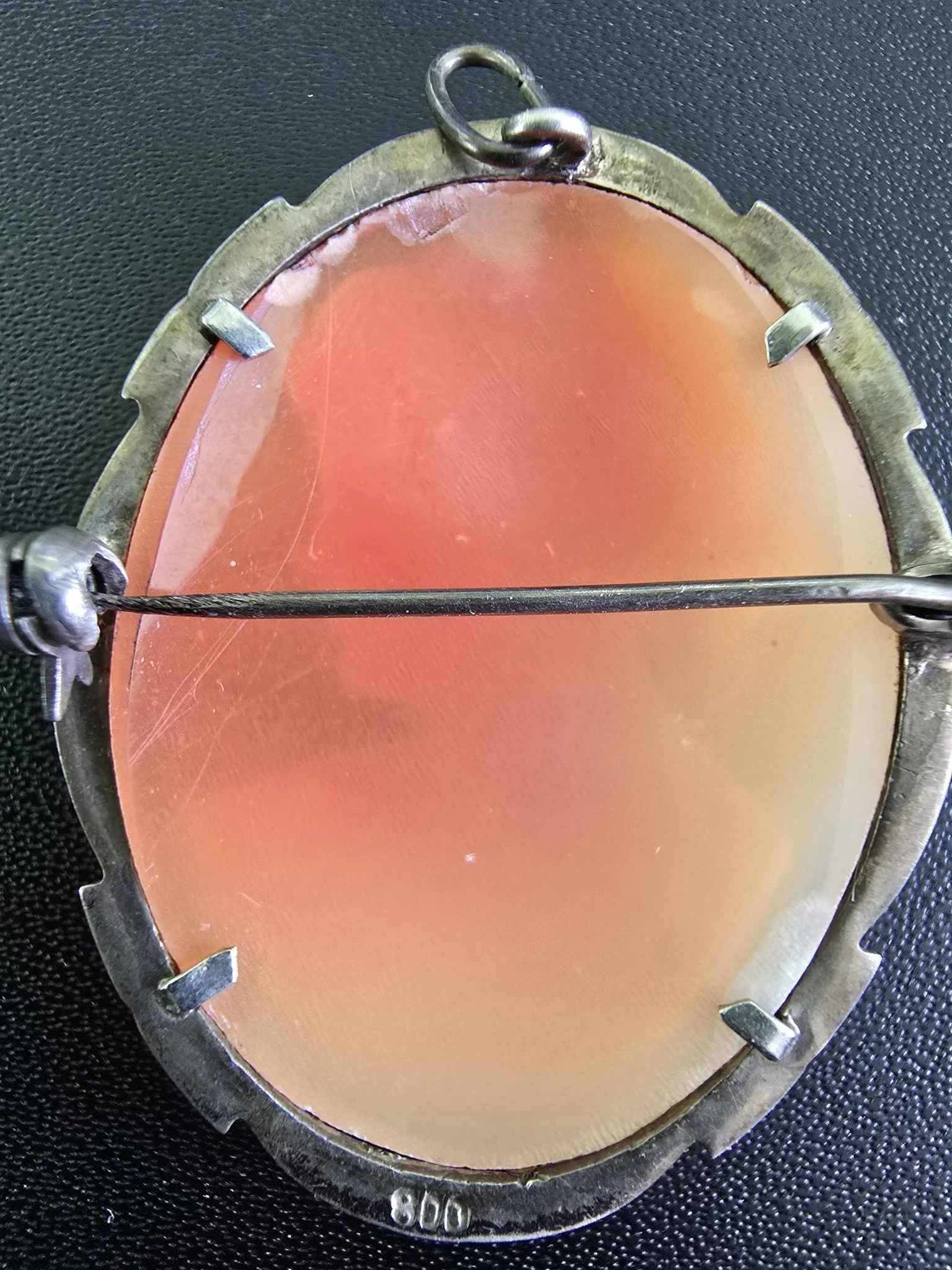 Image 1 of 8
Image 1 of 8

 Image 2 of 8
Image 2 of 8

 Image 3 of 8
Image 3 of 8

 Image 4 of 8
Image 4 of 8

 Image 5 of 8
Image 5 of 8

 Image 6 of 8
Image 6 of 8

 Image 7 of 8
Image 7 of 8

 Image 8 of 8
Image 8 of 8









Victorian Cameo Brooch Pendant – 800 Silver with Marcasite – Hand Carved Shell Portrait – Late 19th Century – Free U.S. Shipping
This elegant Victorian cameo brooch pendant features a beautifully hand-carved conch shell portrait set in a finely detailed 800 silver frame, adorned with sparkling marcasite accents. The high-relief carving depicts a classical woman in profile, with exquisite detail in her hairstyle, floral accent, and beaded necklace.
Crafted in Continental Europe circa 1880–1900, this piece combines craftsmanship and sentimentality. It is designed with both a pin back and a bail loop, allowing you to wear it as a brooch or pendant. All marcasites are present, and the piece is in excellent antique condition.
Ships free within the U.S. via USPS First Class with secure packaging.
📌 Details:
Material: 800 silver (80% pure), shell cameo, rose-cut marcasite
Size: Approx. 1-3/4” tall x 1-1/4” wide
Condition: Excellent antique, all stones intact
Clasp: Traditional pin & bail (brooch/pendant combo)
Era: Late 19th century, Victorian
Origin: Likely Continental Europe (German/Italian)
This elegant Victorian cameo brooch pendant features a beautifully hand-carved conch shell portrait set in a finely detailed 800 silver frame, adorned with sparkling marcasite accents. The high-relief carving depicts a classical woman in profile, with exquisite detail in her hairstyle, floral accent, and beaded necklace.
Crafted in Continental Europe circa 1880–1900, this piece combines craftsmanship and sentimentality. It is designed with both a pin back and a bail loop, allowing you to wear it as a brooch or pendant. All marcasites are present, and the piece is in excellent antique condition.
Ships free within the U.S. via USPS First Class with secure packaging.
📌 Details:
Material: 800 silver (80% pure), shell cameo, rose-cut marcasite
Size: Approx. 1-3/4” tall x 1-1/4” wide
Condition: Excellent antique, all stones intact
Clasp: Traditional pin & bail (brooch/pendant combo)
Era: Late 19th century, Victorian
Origin: Likely Continental Europe (German/Italian)
